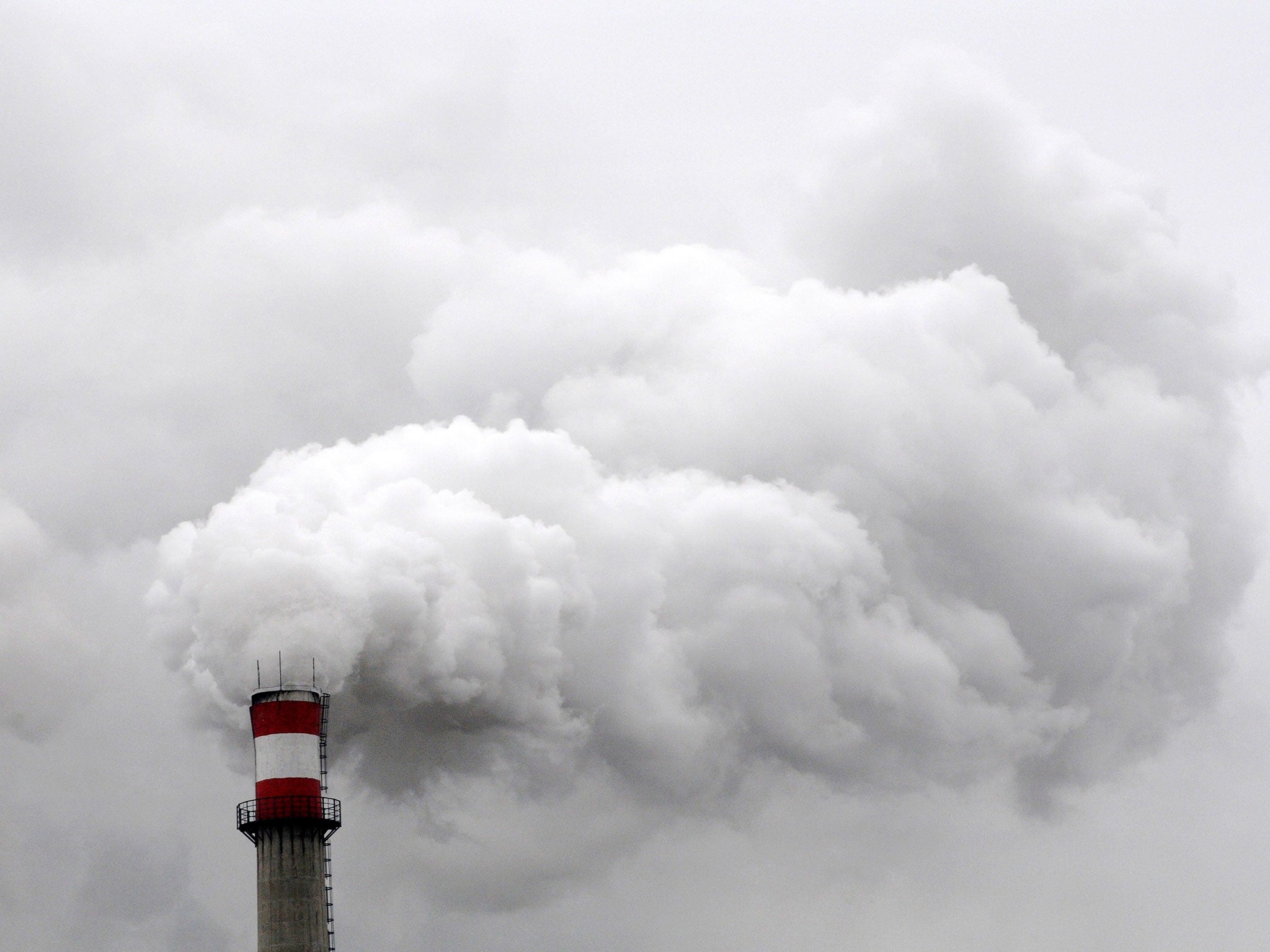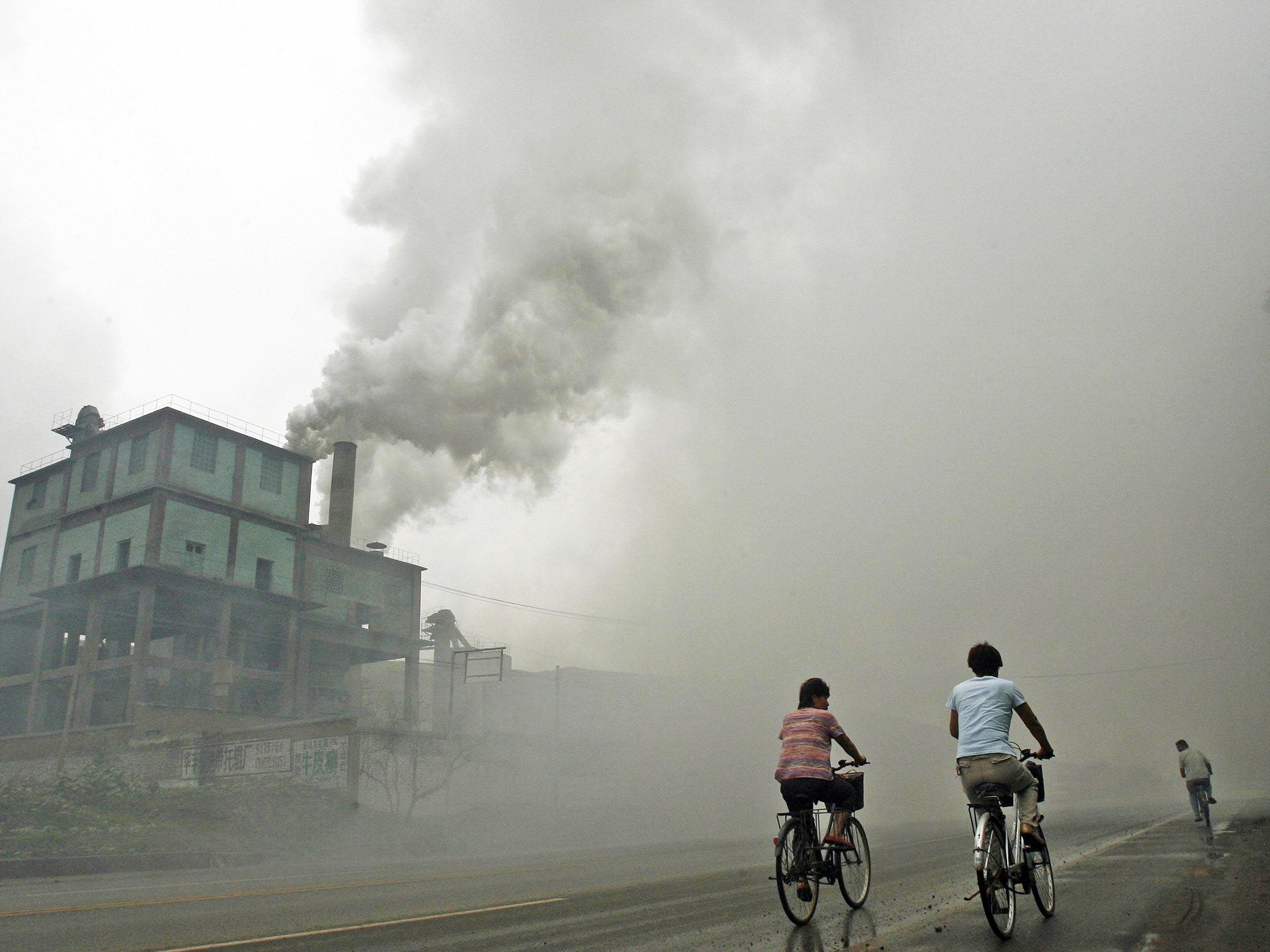Carbon dioxide levels 'exploded' last year to reach record highs not seen since end of Ice Age, scientists warn
Last time there was such a sustained increase was at the end of the last Ice Age

Levels of carbon dioxide in the atmosphere “exploded” last year to reach a new record high not seen for thousands of years, scientists have announced.
The last time there was such a sustained increase in carbon dioxide concentrations was at the end of the last Ice Age, between 17,000 and 11,000 years ago. But the current increase is now about 200 times faster than then, they said.
A combination of man-made emissions of carbon dioxide and the effects of the El Nino phenomenon in the Pacific Ocean have both contributed to the rapid rise at a time when the world is trying to curb emissions of the greenhouse gas, the researchers said.
Instruments monitoring CO2 levels at the Mauna Loa Observatory in Hawaii recorded a jump of 3.05 parts per million (ppm) during 2015, which is the largest year-on-year increase in 56 years of research at the site, according to the US National Oceanic and Atmospheric Administration (NOAA).
It is the fourth consecutive year that CO2 grew more than 2ppm, said Pieter Tans, the lead scientist on NOAA’s global greenhouse gas reference network.
“Carbon dioxide levels are increasing faster than they have in hundreds of thousands of years. It’s explosive compared to natural processes,” Dr Tans said.
Two set of instruments, one run by NOAA the other by the Scripps Institution of Oceanography, have for more than half a century both measured CO2 levels at the remote Hawaiian outpost, which, being in the centre of the Pacific Ocean, is free from localised industrial activities that may influence the results.
The Mauna Loa record shows a year-on-year increase, which now seems to be accelerating at a time when the world is trying to agree curbs on industrial emissions of greenhouse gases that exacerbate global warming.
In February 2016, the average global atmospheric CO2 level stood at 402.59 ppm. Prior to 1800, atmospheric CO2 averaged about 280 ppm, showing the influence of man-made emissions since the industrial revolution.
The current El Nino, which is now dying away, has been one of the strongest on record, causing weather disturbances around the world, and resulting in higher levels of carbon dioxide into the atmosphere.

The latest measurements from the Mauna Load Observatory are significant because the site produces the oldest continuous set of atmospheric measurements in the world – and is widely regarded as a benchmark site for the World Meteorological Organisation (WMO).
“The impact of El Niño on CO2 concentrations is a natural and relatively short-lived phenomenon. But the main long-term driver is greenhouse gas emissions from human activities. We have the power and responsibility to cut these,” said Petteri Taalas, the WMO’s secretary-general.
“This should serve as a wake-up call to governments about the need to sign the Paris Climate Agreement and to take urgent action to make the cuts in CO2 emissions necessary to keep global temperature rises to well below 2°C,” he said.
Carbon dioxide concentrations fluctuate with the seasons, decreasing with the end of the northern summer and increasing at the end of winter. However, the overall trend has seen an increase of 2ppm on average per year for the past 10 years, reaching new record levels each year, the WMO said.
Professor Philip Jones of the Climatic Research Unit at the University of East Anglia, said: “CO2 generally increases more during an El Nino year compared to an average year, as El Nino years tend to be warmer and drier. So a record change in 2015 compared to 2014 was not unexpected, but the increase of 3ppm is the largest recorded, which began at Mauna Loa in 1958.”
CO2 remains in the atmosphere for tens of thousands of years, trapping heat and causing Earth to warm further. Its lifespan in the oceans is even longer. It is the single most important greenhouse gas emitted by human activities.
Join our commenting forum
Join thought-provoking conversations, follow other Independent readers and see their replies
Comments